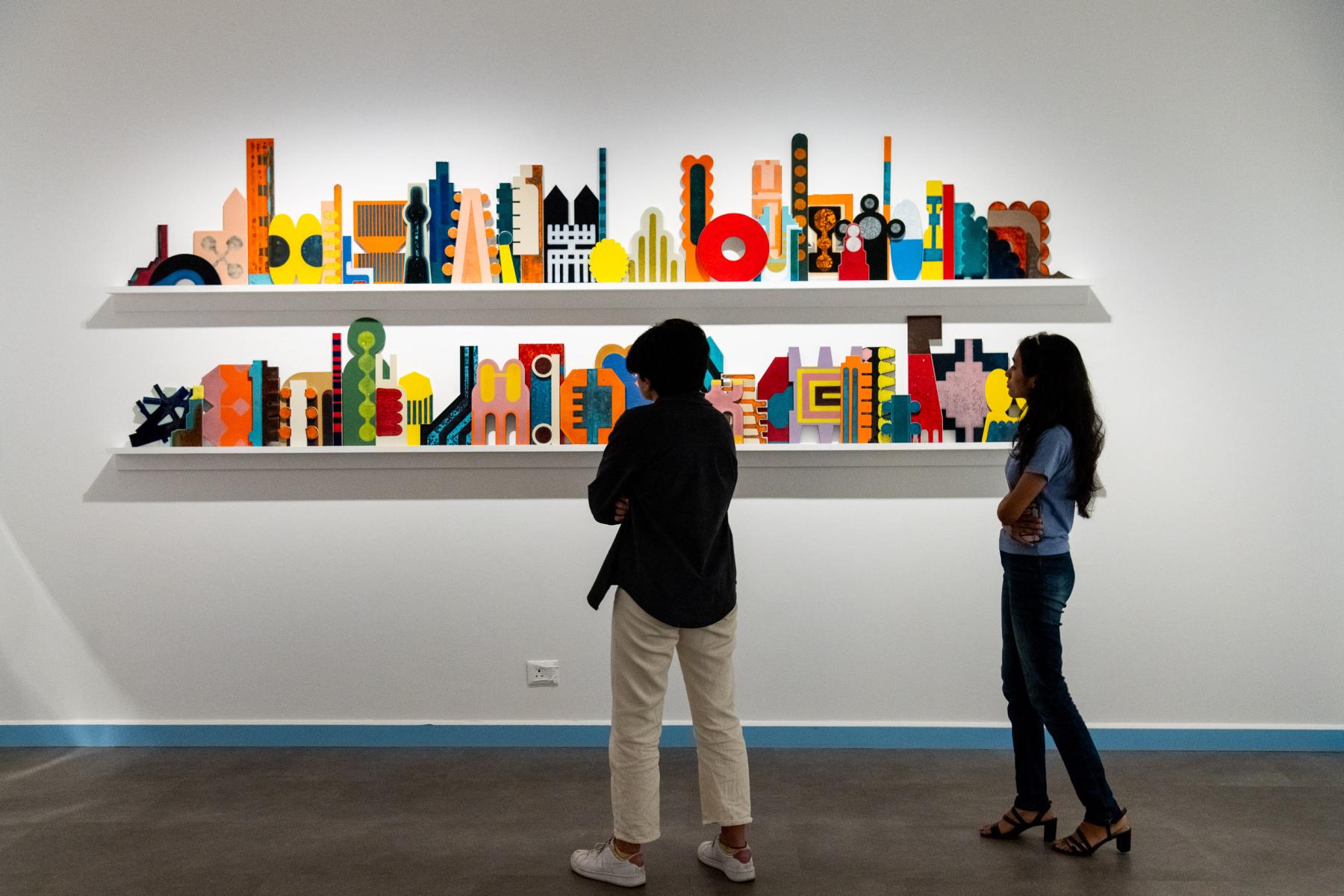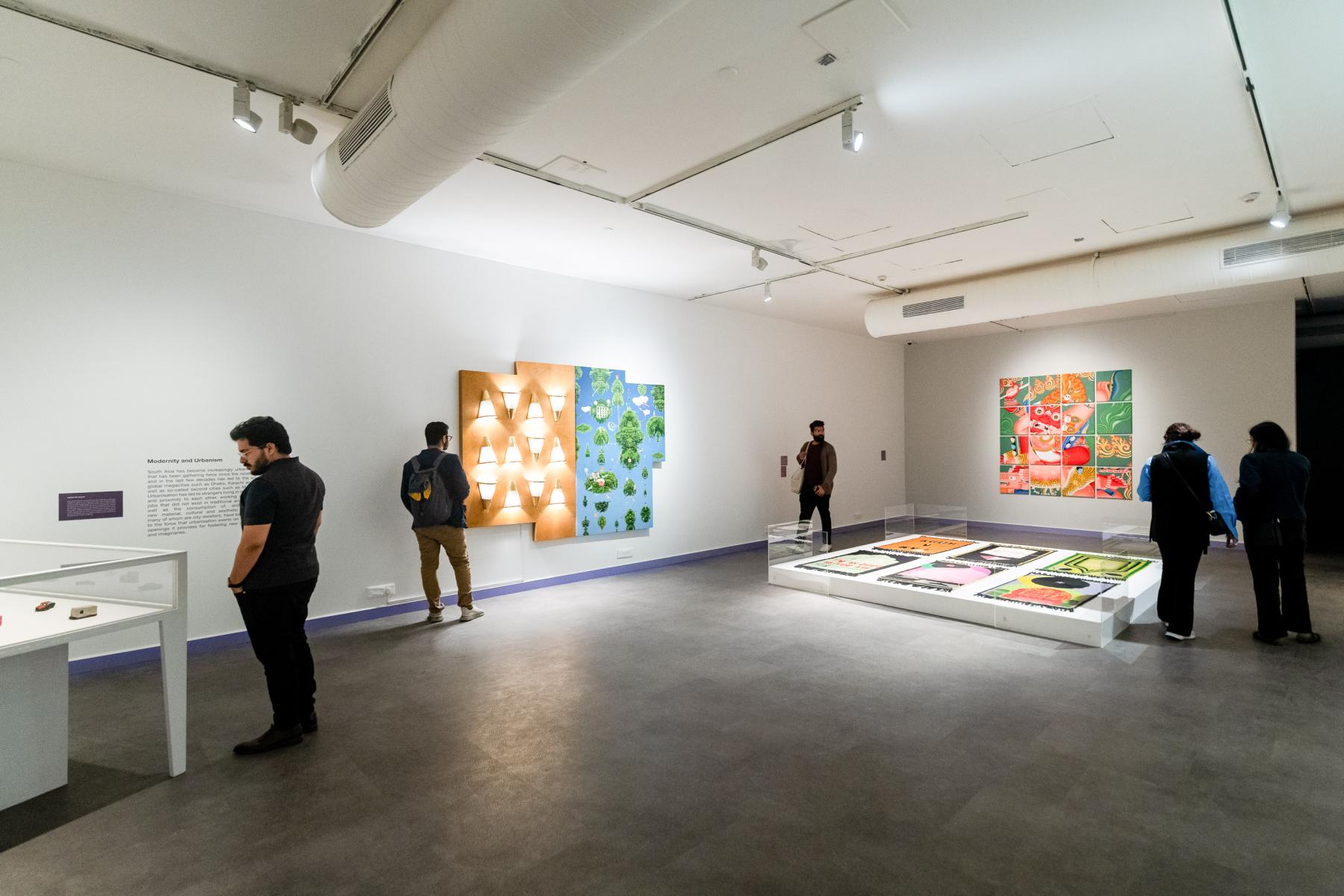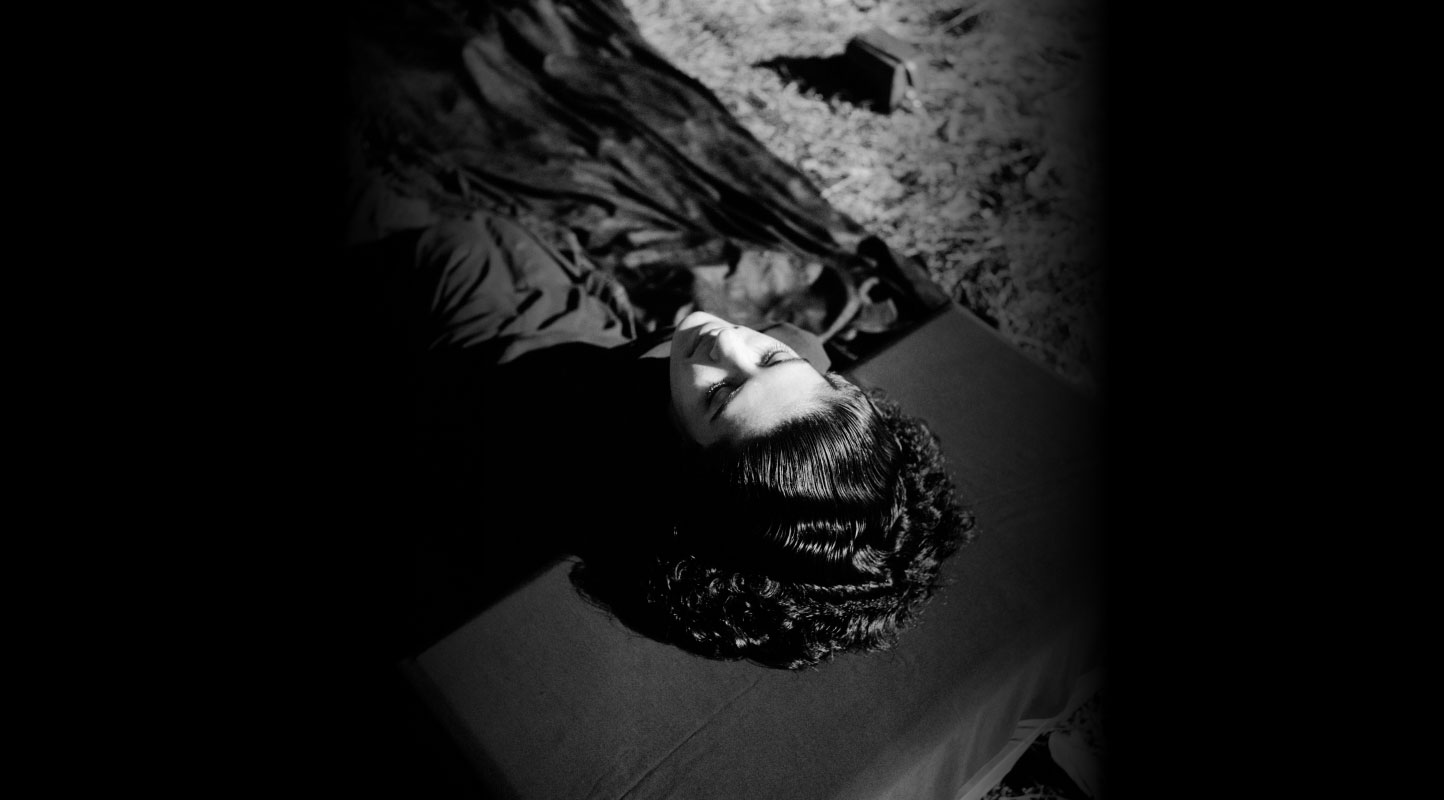Defining the Popular in Art: In Conversation with Iftikhar Dadi
Popular art is tied to notions of vernacular culture, bazaar aesthetics and quotidian politics on the one hand, and mass culture and cultic forms of representation on the other. The exhibition Pop South Asia, co-presented by the Sharjah Art Foundation and the Kiran Nadar Museum of Art (KNMA) presents a heady blend of both the lyrical and evidentiary, exploring both analogue samples and new technologies. Through archival sources and mid-career, resident and diaspora artists from South Asia, the show traverses an evolving “popular” ethics, thereby expanding the definition of the popular in today’s context through a sensorial curatorial experience of the cross-disciplinary and the cross-genre.
In this continuing interview, Prof. Iftikhar Dadi talks further about the curatorial unpacking of the popular, challenging established notions around “pop art” and situating the discourse within the artworks that were on display as a part of the show.

Exhibition view of Pop South Asia: Artistic Explorations in the Popular at KNMA Saket (Delhi, 9 February–30 April 2023).
Rahaab Allana (RA): Christopher Pinney has talked about practices that are “more than local but less than global.” On the one hand, the show is a kind of survey presenting a gamut of material, which may perhaps become canonised in a certain way. On the other hand, it is also trying to break away from the normative understanding that art history might have of the popular. How do you manoeuvre this space between defining and redefining?
Iftikhar Dadi (ID): I am hoping for ripple effects and the question of canonisation is very relevant. I think getting away from chronology and even geography is significant. And identifying by theme gets us a little bit out of canonisation—such as through questions of utopia and dystopia. There are a number of artists engaging with science fiction or animation who address this notion, so we cannot really claim to be canonical or definite. There has never been a show like this, even as one thinks of it in terms of reconsidering nation-states or metropolitanism. But, in terms of thinking of it with reference to relationships, the notion of home in diaspora and across borders is communicated. I recently finished a book on cinema from Lahore titled Lahore Cinema: Between Realism and Fable (University of Washington Press, 2022). People who write on film music in cinema talk about how folk music has to be translated into something mainstream. In other words, if something is very local, for it to become mediatised, it has to undergo translation.
When “vernacular”, traditional, or folk forms undergo translation in the age of media, they circulate much more. Personally, when I was growing up, I did not know which was a Pakistani song or an Indian song, even though I could not watch Indian films because they were banned at that time. I think it is linked to the question of the circulation of media. Even with Tamil popular culture, do the roots lie in Sri Lanka? Do they lie in Malaysia?
Installation View of Pop South Asia: Artistic Explorations in the Popular at KNMA Saket (Delhi, 9 February–30 April 2023).
RA: The work of CK Rajan—who had made wonderful collages—seen from a larger perspective highlighted aspects of the show, such as the coming together of many details into view. But how do we translate this montage and see it refracted either with or through resistance to the normative today?
ID: There was a montage of language, interpretation and visual culture as a whole. A sense that these visual cultures intertwine in seamless ways. And it is not necessary to take them apart from this region or that, as the artistic thrust comes from there. At the same time, given the reality of the situation today, with the intensification of political cultural agendas and how the ruling dispensation is deploying publics, we have to consider different corporate or public sectors that run information and the dataveillance. These might make us believe that the popular voice of something is rooted to the ground, that it speaks from the bottom up. Is the popular voice the majority voice? That in itself is a slight complication at this moment in time. How does it reach out to the subaltern in this day and age?
Hence, there is some risk in our curation of the show. We are thinking about the artist’s engagement with the popular, which includes the advanced capitalist and commodity image, but it is also a retake of tradition, borders and local/adhoc capitalisms. The second aspect is that we are not looking at subaltern voices directly. It is about artists who care and have social capital. On the other hand, historically, we know that the popular and the urban also need to engage with different forms of posturing. Historically, for instance, in Ravi Varma’s work, we see how religiosity becomes intensified and perhaps it has political overtones, but this was a representation of pop aesthetics rather than political majoritarianism.
Installation View of Pop South Asia: Artistic Explorations in the Popular at KNMA Saket (Delhi, 9 February–30 April 2023).
RA: This exhibition created a public-facing initiative drawn heavily from archives. What were some of the practical challenges you faced?
ID: We have works from the Fukuoka Asian Art Museum (Japan), the KNMA and other private collections that we could identify. It is not as archival as some other shows—we do not have too many vitrines. It is more object-based, giving primacy to artistic form. One advantage of this approach is that it is playful and ironic, which is another way to invoke serious questions.
The process of putting the exhibition together started before Covid-19. I was working with Amrita Jhaveri and we were initially thinking of it as a small show. However, when we started to research, the show became bigger and bigger, so we decided to see if the Sharjah Art Foundation would be interested. We are also hoping to bring out a critical reader. We wanted to have multiple voices who could address diverse aspects. The guidebook already has two critical essays, which have been authored by Roobina Karode and myself, but the critical reader will expand on the historical aspects.

Exhibition view of Pop South Asia: Artistic Explorations in the Popular at KNMA Saket (Delhi, 9 February–30 April 2023).
To read more about Iftikhar Dadi’s scholarly work on politics and popular culture, revisit Ankan Kazi’s reading of political posters in Pakistan. To read more about some of the events organised in conjunction with Pop South Asia at the Kiran Nadar Museum of Art, read Mallika Visvanathan’s reflection on the symposium Imaging South Asia.
All images courtesy of the Kiran Nadar Museum of Art.




